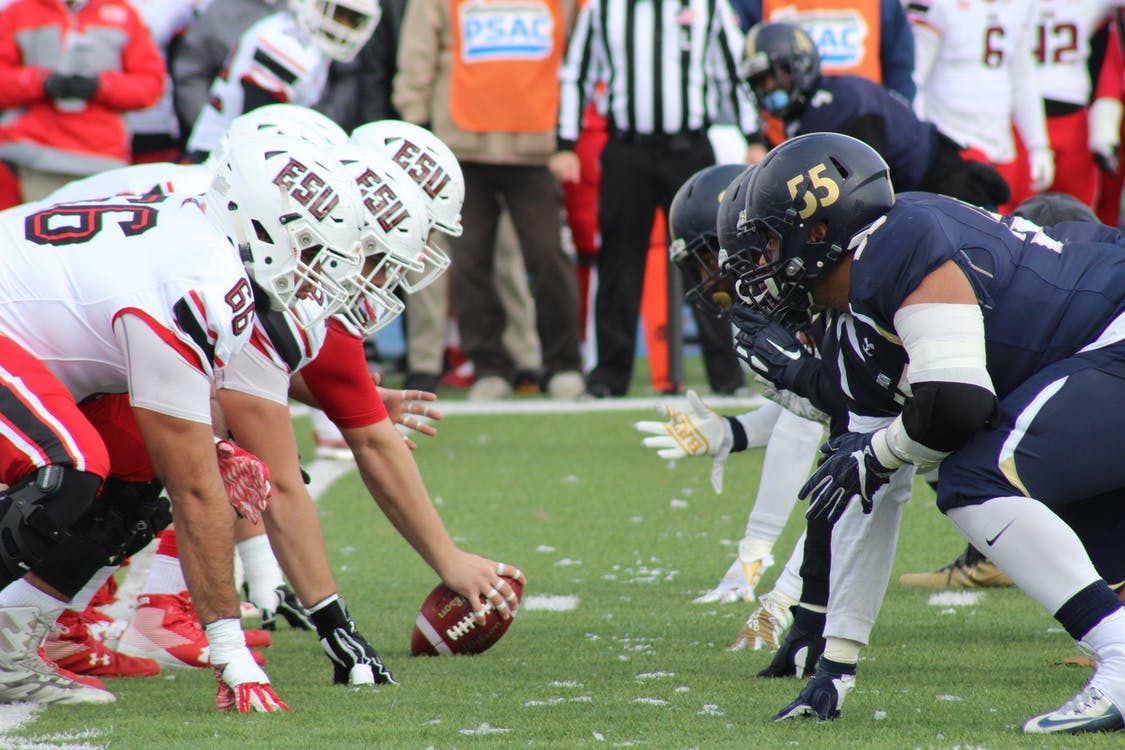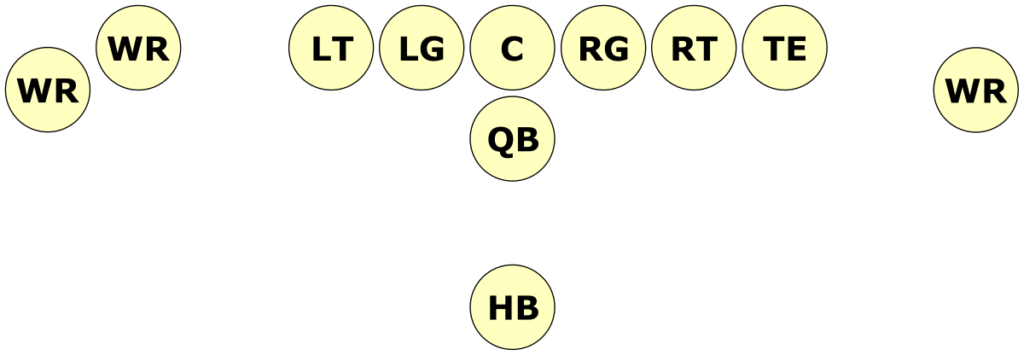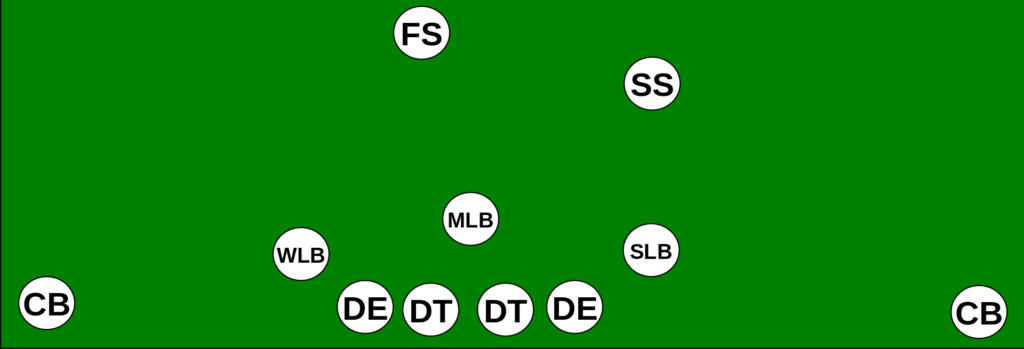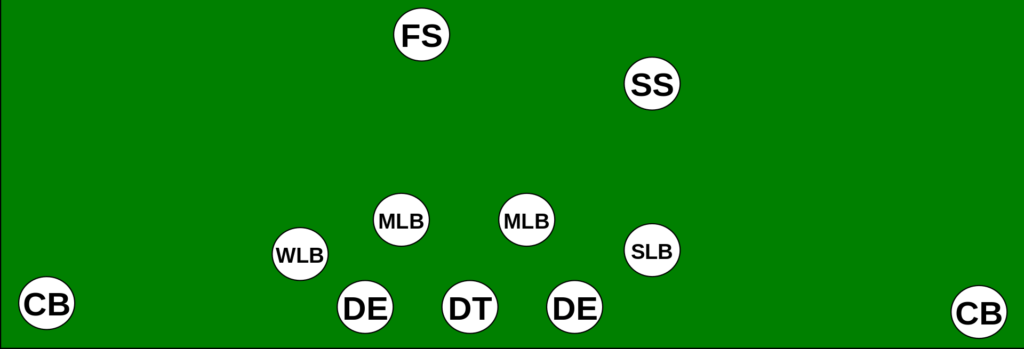National Football League, commonly known as NFL, is a professional American Football League comprising 32 teams separated equally between the American Football Conference(AFC) and the National Football Conference(NFC). While the NFL focuses on professional football, college football operates separately. If you’re interested in college football fantasy rankings, there are various resources available to help you analyze players and make informed decisions for your college football fantasy league. These rankings can provide valuable insights into the performance and potential of college football players.
The NFL is one of the “Big Four” North American Professional Sports Leagues (NBA- National Basketball Association, NHL- National Hockey League, and MLB- Major League Baseball).
In this article, we will show the most common formations in the NFL. To find out more about NFL information, let us watch NFL Streams, Predictions & Previews.
How Popular Is NFL?
By any measure, the NFL is one of the most successful professional sports leagues in North America. Its revenue annually is estimated at around $13 billion to $15 billion through its coverage on TV, ticket sales, sponsorships, and concessions.
Specifically, the NFL currently has TV cooperation with NBC, CBS, Fox, and ESPN- popular channels in the US. Moreover, the NFL has its own show- The Super Bowl, attracting hundreds of millions of viewers all around the world, not to mention its coverage on social media sites, such as Twitter, Facebook, or even celebs.
Super Bowl- The Show Of NFL Performed By Shakira And J.Lo
The Brief History Of The NFL
Founded in 1920 in Canton, Ohio, NFL was first considered as the American Professional Football Association. Jim Thorpe – a remarkable American athlete and a participant in the league, was the first president of the American Professional Football Association.
The NFL has been surviving for many years of ups and downs- mainly from rival organizations to become the most influential American professional football league.
However, the main challenge to its prominent role has its root from the AFL (the American Football League) in the 1960s. The NFL then combined with the AFL in 1970, forming a 26-team circuit under the name of the NFL. Since then, the league has enlarged four times, creating six new franchises.
NFL- The Most Common Formations
In football, the formation illustrates the way the players in each team are placed on the field. Many alterations are feasible on both sides, basing on the strategic plan being used.
The following paragraphs will show you the most formations on both offensive strategy and defensive strategy. Let’s check it out!
Offensive Formations
If the team applies offensive strategies, the formation must consist of at least seven scrimmage participants, including a center to snap the ball to begin the game.
Shotgun Formation
The Shotgun formation is the most popular arrangement of offense with the quarterback placed 5 to 6 yards behind the center to have a higher watch on the defensive line and more time to get a pass off.
The team following shotgun formation commonly employs a running back next to the quarterback to support him better.
Primarily, this formation was applied for passing downs. However, many teams now have used this strategy to be the base formation.
As it is tougher to deploy a rushing attack using only the shotgun, almost all NFL teams keep the shotgun for apparent passing conditions, such as long passes or when the team inclines to lose, trying to score rapidly.
Shotgun Formation In The NFL
Singleback Formation
Singleback formation or “Ace” formation, is an offensive base formation in the NFL that requires only one running back positioned about 5 yards behind the quarterback.
There are several fluctuations in this kind of formation, such as two wide receivers combining with two wide ends, three wide receivers, and one wide end, and so on.
The single back formation needs great runners, wise running back, versatile tight ends for both receiving and blocking effectively, and remarkable offensive linemen.
And because of the standards listed, this formation seems to be more suitable with a professional level rather than high school or college.
Singleback Formation In The NFL
Wildcat Formation
As the name revealed, the wildcat is a running formation in which a player (commonly a running back or a strong receiver) takes the quarterback’s position in a shotgun formation.
The ball is snapped to the runner, who often has two options- holding the ball himself or giving it to another running back in the backfield.
The wildcat lets the runner have great control over the defense before the snap, allowing him to decide on the best running lane.
This formation also validates ten offensive players to block that is different from conventional running play when the quarterback is usually not included after passing the ball to a running back.
Defensive Formations
4-3 Formation
In the NFL, the 4-3 formation is widely used by many teams as it is useful when the team deals with the run and the pass. This formation needs four players in the defensive line, four defensive backs( two corners, and two safeties), three linebackers.
In this formation, on passing downs, the middle linebacker (Mike) often covers any running backs, the Sam (strong-side linebacker) is in charge of the tight end, and the weak-side linebacker(Will) either supports a back or blitzes in the hope of sacking the quarterback.
There are several versions of the 4–3 defensive formation, such as 4-3 under defense, 4-3 over defense, etc.
A Basic 4-3 Formation
3-4 Formation
3-4 formation is the primary defensive strategy of some teams in the NFL. This formation is different from the 4-3 formation in the number of defensive linemen and linebackers( 3 defensive linemen and four linebackers.
This formation reduces the size of linemen to gain speed for linebackers. There is also a variation of this defense called the 3-4 under defense.
A Basic 3-4 Formation
46 Defense Formation
The 46 formation is a new defense with an exceptional defensive front designed to pressure the opponent’s offense, mainly their quarterback.
A prominent disadvantage of the 46 defense formation lies in how the eight defensive players stand in a line near the scrimmage, and only three players defend in the secondary, leaving some open areas for receivers to catch passes.
How Do Formations Work in Football?
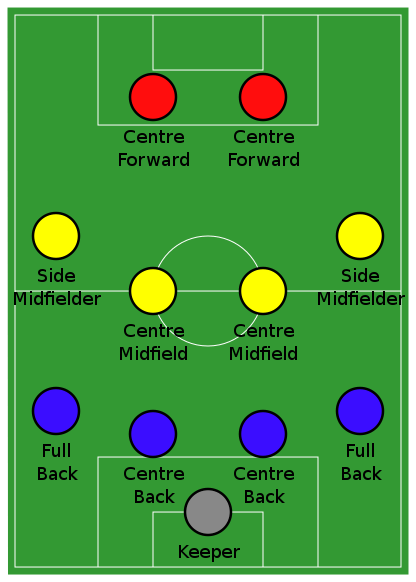
https://commons.wikimedia.org/wiki/User:Threner~commonswiki
The NFL formations guide starts with the idea that formations are usually the first part of a play call. Every football play starts with deciding how many running backs, wide receivers, and tight ends should be on the field. The quarterback and the five offensive linemen are always on the field. But the other five players can be split between receivers, running backs, and tight ends in different ways.
The name of most football formations comes from the number of running backs and tight ends on the field.
For example, 11 personnel mean there is one running back and one tight end, and the other three skill players are wide receivers. In the 21 personnel, there are two running backs, one tight end, and two wide receivers. Of course, there are some formations that don’t use running backs or tight ends. Teams will sometimes use a five-wide set, which is a formation with five wide receivers on the field.
After determining the personnel on the field, various formations dictate where players should line up before the snap. If there are two running backs on the field, they can be in a “I” formation, with one back standing beyond the other, or in a split set.
Similarly, wide receivers can line up in a variety of formations. First, the formation is determined by how many wide receivers are to the left and how many are to the right of the quarterback. A “trips” formation, for example, refers to three wide receivers on one side of the field before the snap, whereas “twins” refers to two receivers on one side. Wide receiver formations can also be “spread” or “bunched,” depending on how close the wide receivers line up to one another.
What Is An Illegal Formation In The NFL?
The NFL formation rules can be a little hard to understand for new fans of the game. Before the snap, the teams need to be lined up in a certain way. Most of the possible penalties in the NFL for illegal formations are against the offense. Most teams have no trouble lining up correctly, but NFL formation rules are sometimes broken.
First, there must be seven players lined up at the line of scrimmage for every play. This usually includes all five offensive linemen and two eligible receivers. If there are only six players lined up with the line of scrimmage, the formation is considered illegal. Also, there must be an eligible receiver lined up at the line of scrimmage on each side of the ball. That means the quarterback and the other three eligible receivers have to line up behind the ball.
It’s also important to note that anyone who lines up at the line of scrimmage inside the outside player at the line of scrimmage is an ineligible receiver. This is usually true only for the offensive linemen. However, if a receiver lines up at the line of scrimmage instead of behind it when another receiver on the outside is at the line of scrimmage, they will not be eligible.
What Is An Illegal Shift?
NFL rules say that before the ball is snapped, only one player can move. This player can still move at the snap as long as they are moving sideways and not forward.
But if they move before the snap, they both have to stop completely before the snap. If they don’t, this is called an illegal shift.
The Best Professional Football Player of All Time
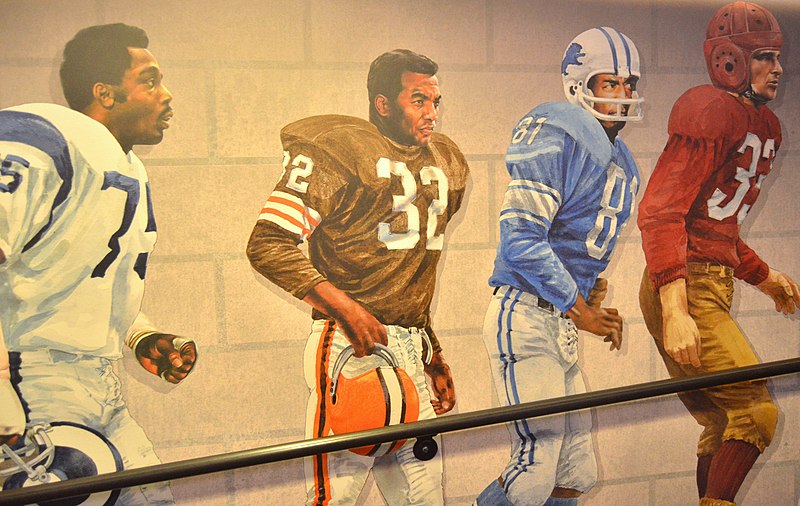
https://www.flickr.com/photos/edrost88/11282194523/
1. Jim Brown — Brown ran for an average of 104.3 yards per game, which was the most ever in NFL history. In eight of his nine seasons, he was the best runner in the league. He was a great all-around athlete at Syracuse, where he got 10 varsity letters in four different sports (basketball, football, lacrosse, track).
2. John Elway — Elway is in the top five in NFL history for the number of passes he has tried, completed, and yards he has thrown. In his career, he ran for more than 3,000 yards and passed for 300 touchdowns.
3. Tony Gonzalez — 13 times in their careers, they were chosen for the Pro Bowl. He had the most receptions, receiving yards, and touchdowns of any NFL tight end. With 1,242 receptions in his career, he is second all-time in the NFL.
4. Calvin Johnson — He broke an NFL record by getting 1,964 yards in a single season (2012). The only player in NFL history to have at least 100 receiving yards in eight straight games.
5. Joe Montana — 3-time Super Bowl MVP.
6. Adrian Peterson — During the 2012 season, he ran for 2,097 yards. In high school, he ran the 100m in 10.33 seconds.
7. Jerry Rice — NFL record holder in career receptions, receiving yards and receiving touchdowns. 13 career Pro Bowl selections.
8. Barry Sanders — One of three players in NFL history with more than 15,000 rushing yards.
9. Lawrence Taylor — Only player to win AP Defensive Player of the Year three times.
10. Reggie White — Second in NFL history with 198 career sacks. 13 Pro Bowl selections in a career, tied for second most all-time.
11. Steve Young — 43 rushing touchdowns in his career, the most by any quarterback in NFL history. A quarterback’s career rushing yards rank third all-time. He was co-captain of the football, basketball, and baseball teams his senior year in high school.
In A Nutshell
Hopefully, this article has provided you with the necessary information on the NFL’s most common formations. We recommend this site to find out more about how the teams in the NFL form their player position in the past and at the current time.
Thanks for reading.

